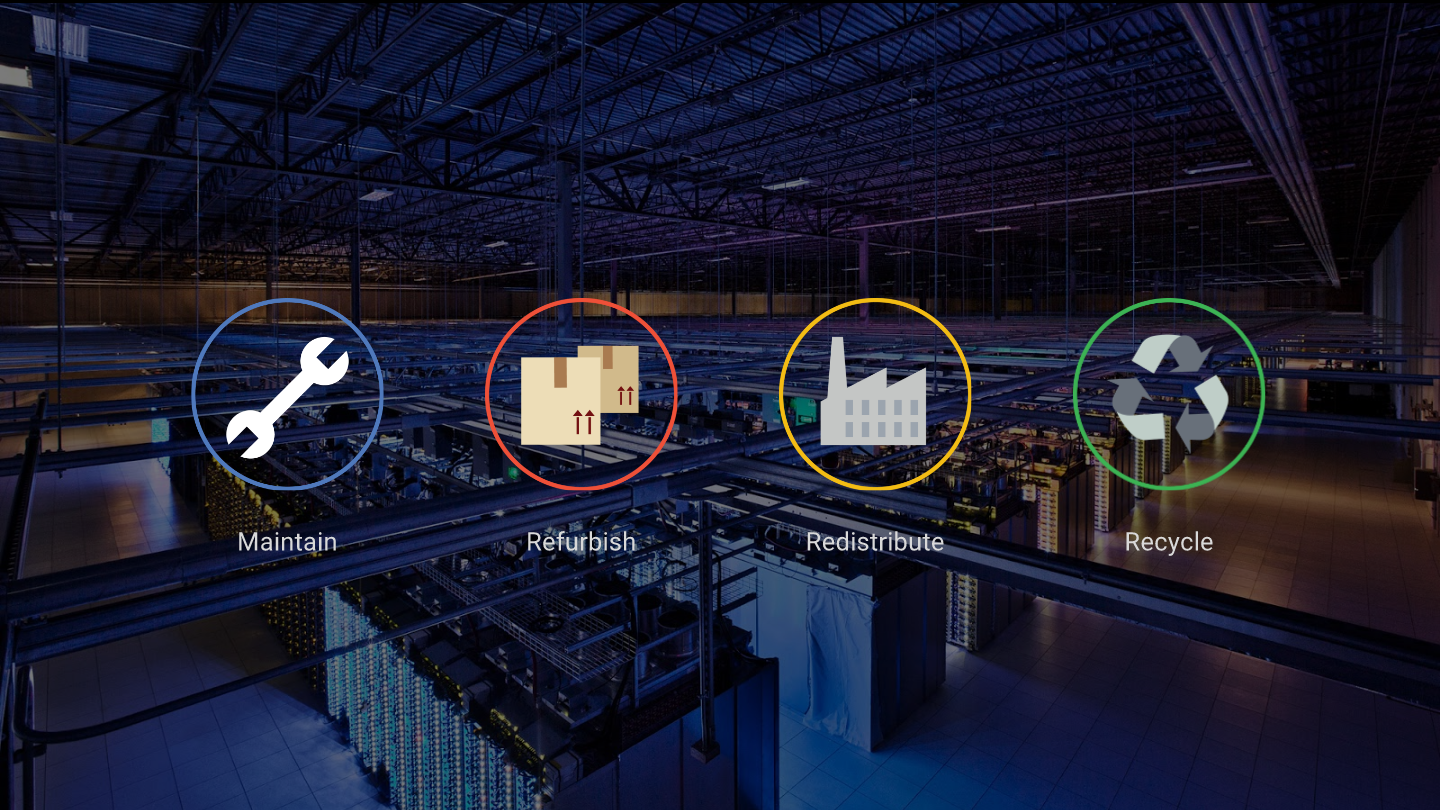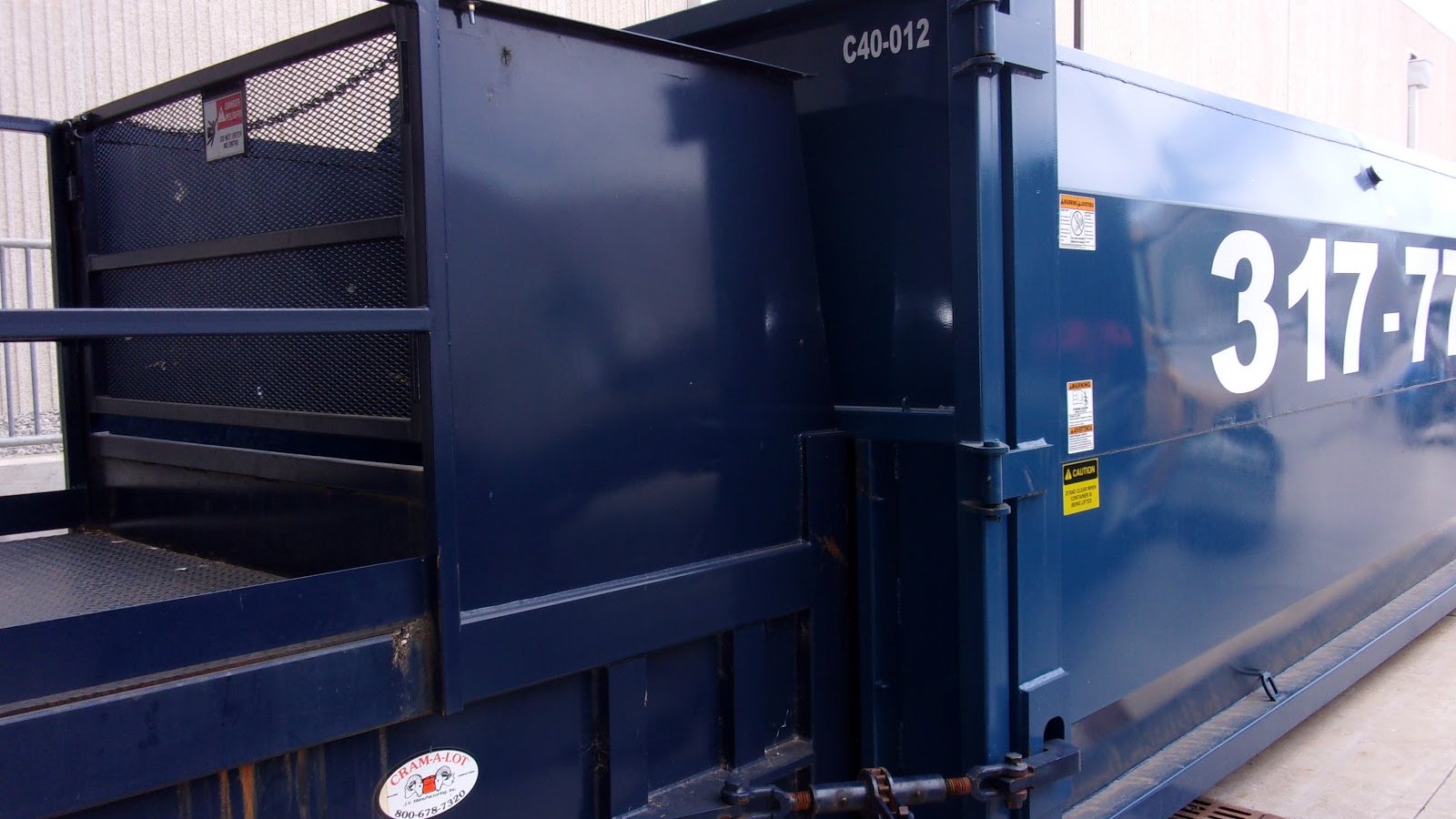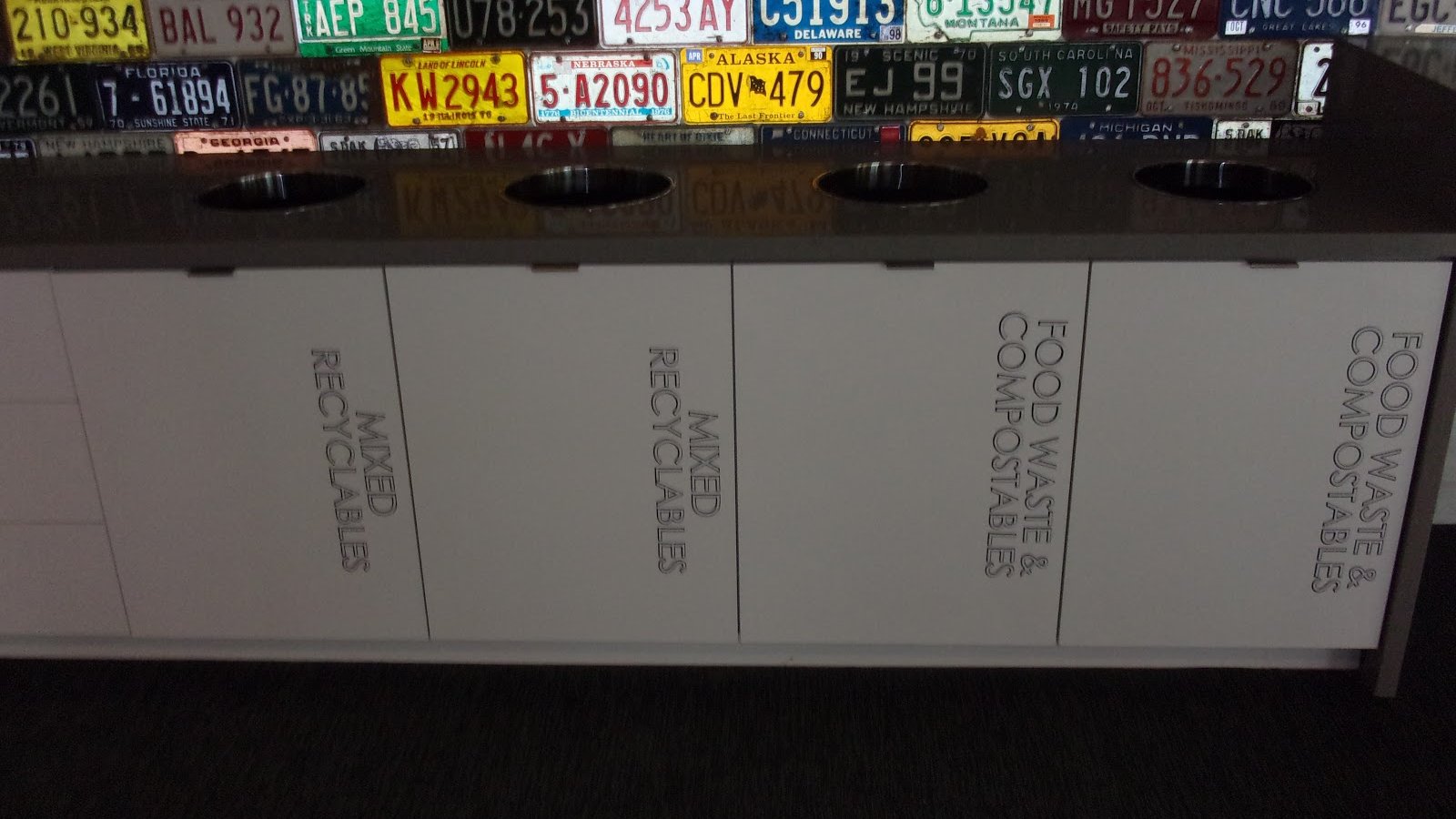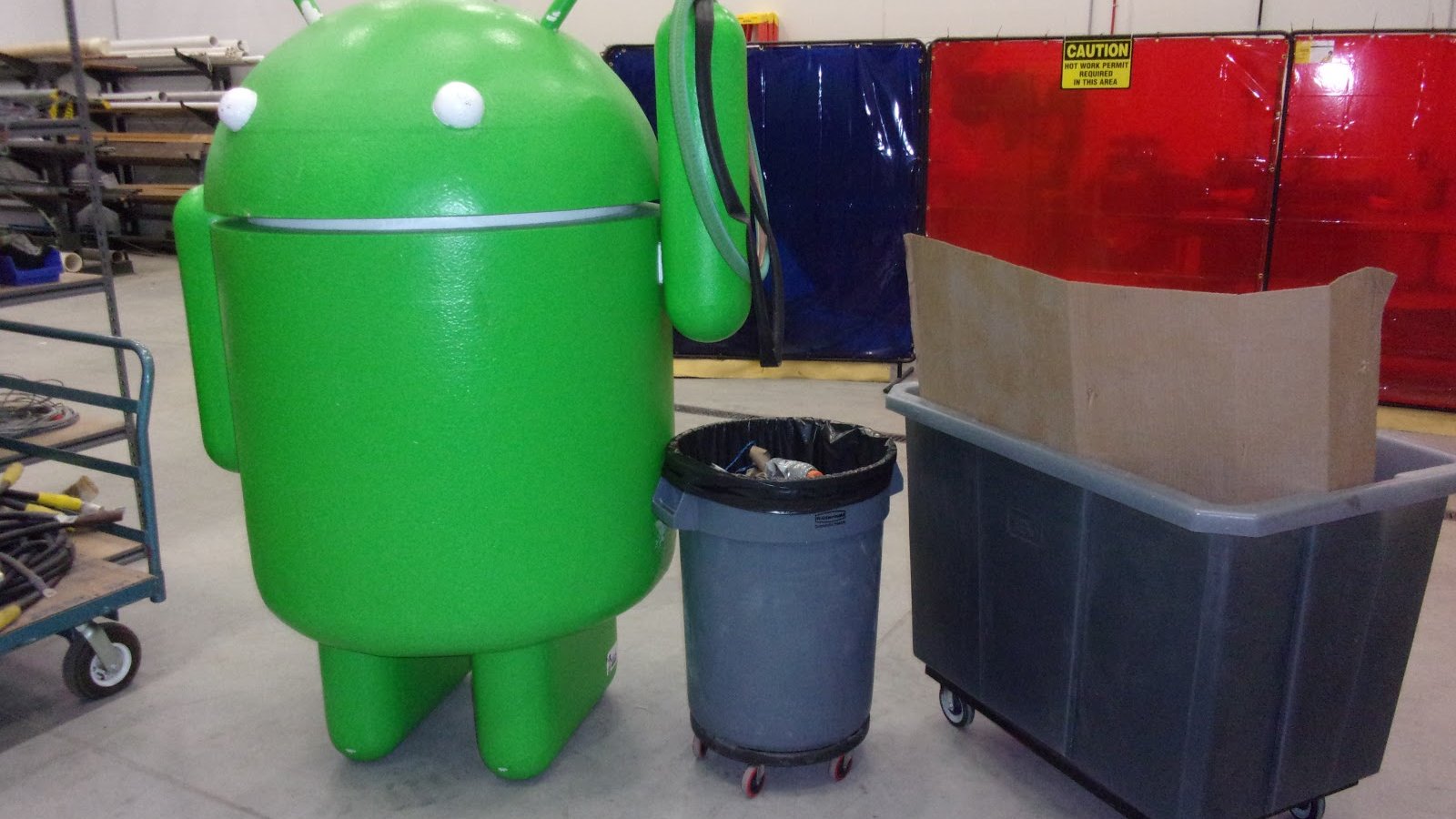Tag Archives: Energy + Environment
Trimming our waste-line: the moonshot to zero
We should instead be moving toward a “circular” economy: That means instead of using raw resources (think timber and ore) to create new products, we keep materials in circulation for multiple uses, whether they are maintained, reused, refurbished or recycled. We already do this in some places: Think of when cotton clothing is reused first as second-hand apparel, then crosses to the furniture industry as fiber-fill in upholstery, which is later reused in stone wool insulation for construction. But there are many more opportunities for businesses to change their use and reuse of resources.
To date, six of our operating Google data centers—nearly half—have achieved 100 percent landfill diversion of all waste. In fact, our data center in Mayes County, Oklahoma, is our first Google data center to officially reach Zero Waste to Landfill.
Today, we are committing to achieve zero waste in all our data centers globally—an ambitious goal and just the kind of challenge that excites us. Although the last 10 to 20 percent of diversion will be the most difficult to solve, it is also where we see the most opportunity to get creative about new community partnerships and designing waste streams out all together.
Here’s how we’re doing it: Google’s data centers work 24/7 to deliver Gmail to a billion users and stream hundreds of millions of hours of YouTube videos a day. This means we are constantly upgrading and maintaining our servers to make sure we meet the increasing demand for our products around the world. Before we buy new equipment and materials, we look for ways to reuse what we already have. When we can’t find a new use for our equipment, we completely erase any components that store data, and then resell them into the market—giving them a second life. In 2015, 52 percent of components used for machine upgrades were refurbished inventory and Google resold nearly 2 million units into the secondary market for reuse by other organizations. The small percentage of hardware that we can’t reuse or resell gets recycled. Which means none of the waste that leaves these data centers goes to a landfill.

In addition to material efficiency, we are dedicated to energy efficiency and the use of clean power to operate our data centers. Compared to five years ago, we now get around 3.5 times the computing power out of the same amount of energy. Today, we are the largest, non-utility, corporate renewable energy purchaser in the world. This means businesses that use our cloud-based products are greener too; a typical organization can see carbon and energy savings in their IT infrastructure between 65 to 85%.
Our offices have also been looking at innovative ways to design out waste. For example, in the Bay Area we have already achieved an 86 percent landfill diversion rate. In addition to our large-scale composting program, we use a software system called LeanPath in our kitchens to track pre-consumer food waste (expired items, over-produced, spoiled, etc.). At our Bay Area campuses alone, this system has prevented more than 392,492 pounds of food going into the waste stream over the past year. Additionally, our imperfect produce initiative has utilized 330,000 pounds of produce in the Bay area that would have gone to waste, in turn wasting the land, water, energy, and other resources necessary to develop that produce.

Ultimately, this massive shift requires global businesses to lead the way to reduce our dependence on primary materials and fossil fuels. But the good news is, a shift like this isn’t just good for the environment, it’s good for bottom lines. In the 2015 study “Growth Within: a circular economy vision for a competitive Europe,” the Ellen MacArthur Foundation, McKinsey and SUN estimated that shifting to a circular economy could be worth €1.8 trillion to Europe by 2030. Recent research from the Ellen MacArthur Foundation suggests that €1.2 trillion of that overall potential comes from the information and communications technology sector. This kind of value can be unlocked globally and gains are anticipated to be even larger in the US.
Becoming circular is something we hope all companies will commit to, together. It is certainly a challenge to change in the way we make things and use them, but it's not impossible. And, in the end, it pays—in our own bottom lines, in our broader economy, and in the environment we all share together.
Source: Energy & Environment
Trimming our waste-line: the moonshot to zero
Source: Energy & Environment
Six Google data centers are diverting 100% of waste from landfill
Over the past few years we’ve started focusing downstream on what resources we’re generating via waste. We’ve been working towards zero waste to landfill at our facilities, as well as reducing the amount of waste we’re generating. Today, we are announcing a new commitment to achieve Zero Waste to Landfill for our global data center operations.
At Google, Zero Waste to Landfill means that when waste leaves our data centers, none of it goes to a landfill—100 percent is diverted to a more sustainable pathway, with no more than 10% of it going to a waste-to-energy facility, unless waste-to-energy can be proved more valuable than alternative diversion paths. Our approach is based off thestandard created by UL Environment who we partnered with to ensure the guidelines we created for our facilities were aligned and compliant with how UL defines and monitors the process.
Six of our 14 sites are achieving 100 percent diversion rates. Globally across our data center operations we are diverting at least 86 percent of waste away from landfills. At our operating data centers in Europe and APAC we have reached 100 percent diversion from landfill which currently includes a contribution from waste to energy of greater than 10 percent. These data centers include: Dublin, Ireland; Hamina, Finland; St Ghislain, Belgium; Changhua County, Taiwan and Singapore. As we continue to implement new diversion strategies and ways to design waste out altogether that percentage will decrease.
Our data center in Mayes County, Oklahoma is our first Google data center to reach Zero Waste to Landfill.
So, how did we get here, where have we had big successes? There have been a couple of themes for success. Find projects that do double duty—those that not only reduce or divert waste, but also have an added benefit, like energy savings or improved process efficiency. For example, our Mayes County data center has deployed compactors to help manage waste. Not only does it help divert waste more effectively, it also gives us accurate weight data for tracking, reduces the number of pick-ups our vendor has to make (saving us and them time and money) and is cleaner overall for the site (reducing how much janitorial work is needed).
Second, sometimes you don’t have to eliminate a waste stream or find a new diversion pathway to reduce the amount of waste, instead you can also look at extending it’s life—then you’re buying less and disposing of less. The same concepts we apply to server management, we apply to our maintenance operations to keep the data centers up and running.
Third, expect the unexpected, waste streams do not stay the same, they change and evolve over time depending on your operations. Be prepared for random new waste products and be flexible. Frequently the last 10 to 20 percent of waste diversion can be the hardest to solve, but understanding these processes is critical to success.
We’ve learned a lot along this journey and will continue to learn more—the effort certainly has not been wasteful. Zero waste to landfill requires a careful attention to the types of materials you’re generating and a deep understanding of your resource pathways. All these learnings allow us to keep pushing towards zero waste to landfill, but also to start looking upstream to add circular economy practices into our operations. Zero waste to landfill is just the first step in a long process to sustainably manage our resources throughout the entire lifecycle of our data centers.
Source: Energy & Environment
Six Google data centers are diverting 100% of waste from landfill
Source: Energy & Environment
New renewable energy in Georgia reduces cost for all customers
Last week, the Georgia Public Services Commission approved Georgia Power’s Integrated Resource Plan, a long-term planning tool that helps to guide the company’s development strategy. We’re pleased that as a result of efforts by Google and others, the plan calls for 1,500 megawatts (MW) of new renewable development for the state as well creation of an additional 200MW program for commercial and industrial customers who wish to buy renewables more directly.
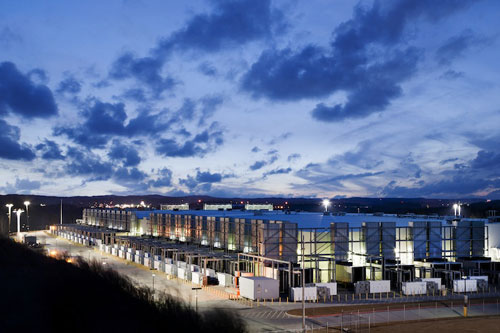
The 200MW C&I purchasing program is the result of urging by Google and a consortium of national and international businesses. We participated in the regulatory process to encourage Georgia Power to adopt more, cost effective renewables, and enable commercial and industrial customers to directly procure renewable power in the state. While the details of this program will need to be fleshed out and approved by the Georgia PSC, we are hopeful that this program will give companies like Google a scalable and sustainable way to source clean energy in Georgia. We look forward to continue working with Georgia Power, the PSC, and other stakeholders in the development of this program and share updates on our progress.
Source: Energy & Environment
New renewable energy in Georgia reduces cost for all customers
Source: Energy & Environment
First solar-powered plane completes maiden round-the-world tour, setting 19 world records
Source: Energy & Environment
First solar-powered plane completes maiden round-the-world tour, setting 19 world records
Google helped build and host Solar Impulse’s digital presence, and on the first day of their round-the-world journey, we jointly launched the #FutureIsClean initiative, a platform to encourage the world to support the adoption of necessary clean technologies.
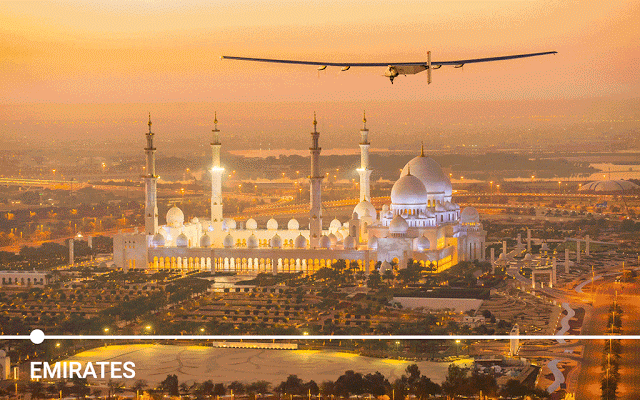
But commitment also comes through advocacy. That’s why in 2013, Google became the internet and technology partner of Solar Impulse: to raise awareness for what's possible with clean technology and renewable energy. Everybody could use the plane’s technologies on the ground to reduce our world’s energy consumption, save natural resources and improve our quality of life.
A global community formed to join the #FutureIsClean movement, following the progression of the Si2 during its travel around the world on www.solarimpulse.com, and tuning in for the pilot’s conversations with the Mission Control Center in Monaco (MCC). A virtual cockpit, built with the help of Google engineers and platforms, provided the telemetrics of Si2 (altitude, speed, battery level, equipment on board, etc.) and immersed children and supporters in the technical and human challenges that Solar Impulse embarked upon.
Today, we join the rest of the world in congratulating the Solar Impulse team for this outstanding accomplishment. Solar Impulse's pioneering spirit enabled them to push human boundaries and demonstrate that clean technologies can achieve goals we once thought were impossible.
